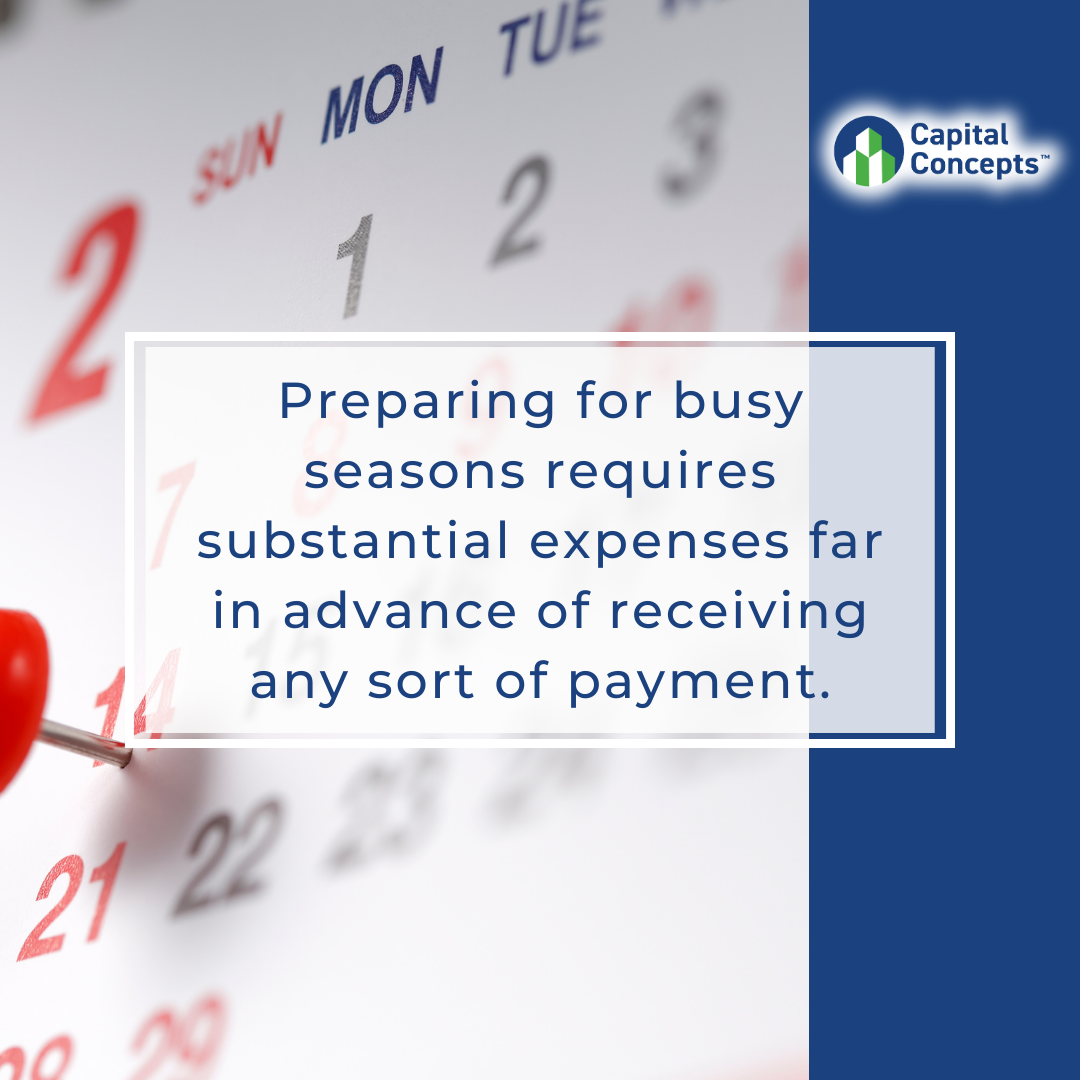The hectic year-end holidays might be over, but for many in the business world, the season of high-expense purchases isn’t over. Each year revolves around central main seasons that require constant hustle and planning.
Retailers are especially aware of this as they place orders six to nine months ahead of any given sale season!
If you’re relying on any sort of inventory, odds are you’re already thinking ahead to what things are going to sell, what’s on trend (and the trajectory of how demand will shift throughout the year), and where customers will take their dollars.
The problem: A story about cashflow management, and why it is such a challenge
Lorne Greenfield, founder and CEO of Capital Concepts, recalls helping a client navigate the murky waters of cashflow.
The construction firm had a fundamental problem. Because of their industry and project scopes, they often didn’t get paid till for 60-75 days after sending their invoices. During the two to three months between invoice and payment, they weren’t able to start new projects they’d been hired for because they didn’t have the cashflow to invest in new projects. It became a cyclical issue that quickly put a cap on the company’s ability to grow and put them in dire financial straits.
The firm hadn’t used financing in the past, and didn’t know where to begin. The team at Capital Concepts helped them get specialized lines of credit and create a plan to have funds in reserve.
In the end, Capital Concepts helped them get to the point where profits exceeded their cash needs, which allowed them to keep signing contracts and expanding their money-earning capabilities!
Don’t make these mistakes!
Preparing for busy seasons requires substantial expenses far in advance of receiving any sort of payment. This creates a huge problem for many business owners: cashflow!
You must plan ahead to make sure you have the cash to make these large purchases that your business relies on.
Creating this plan isn’t as easy as marking your calendar. You will need to know the correct types of loan options that will help your business. But the finance world is complex, and this kind of knowledge is not common! On top of that, you’ll need to dedicate large amounts of time and energy into pursuing those options. With the existing demands of your business, you won’t have the bandwidth to become an overnight expert in this area.
Common issues in a nutshell:
1️⃣ Lack of knowledge about where to find reliable (and personalized) cashflow sources
2️⃣ Lack of time to invest in crafting a sustainable cashflow plan
Cashflow is about more than just going to the bank. You need reliable streams of finances (through loans or investments) that are personalized customized to your business needs, and a plan of action to give you the breathing room to look ahead.
Because until you get to point where profits exceed what your cash needs are, you’ll always be in a vulnerable point where you’re operating in the red.
That’s where we come in.
Finding a starting point
We help you have funds lined up so that your company has the ability to make orders on time.
That might look like guiding you to specialized financing options and loans. Or, it might require revamping your invoice schedule with clients, compressing the terms to match your cashflow needs.
Whatever your biggest need, we’ll start by helping you determine how much cash you actually need to bridge the gap between your expenses and revenue, and how to get that cash capital sustainably.
Related Articles
Common Barriers to a Successful Business Exit
Before we begin our deep dive into successful exit planning, we pause to look at the bigger picture. A successful exit will require you to overcome multiple barriers, all of which are interconnected. The good news is we know what the most common barriers are, and by doing this work, you will also build a stronger business.
Introduction To Exit Planning
What if we told you that thinking about your exit in the future actually helps you solve the problems you’re facing today in your business much more effectively? It’s true, and it’s why we’re so passionate about exit planning for business owners. This month we published the first of many articles on what exit planning is, why it’s so important, and when to start. If you need one reason to read, make it this:
80% of businesses put up for sale do not sell, and of the 20% that actually sell, only 14% achieve the desired sale price.
Want to be one of the <3% of business owners who realize the benefits of business ownership? Read the article to learn how.



0 Comments